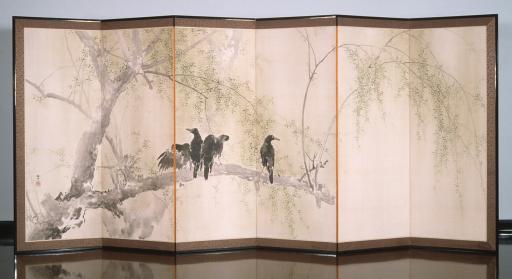Crows on Willow, Yamada Kōun
Artwork Overview
Yamada Kōun, artist
1878–1956
Crows on Willow,
mid 1900s
Where object was made: Japan
Material/technique: ink; color; silk
Dimensions:
Image Dimensions Height/Width (Height x Width): 156 x 354 cm
Image Dimensions Height/Width (Height x Width): 61 7/16 x 139 3/8 in
Mount Dimensions (Height x Width x Depth): 171 x 372 cm
Mount Dimensions (Height x Width x Depth): 67 5/16 x 146 7/16 in
Image Dimensions Height/Width (Height x Width): 156 x 354 cm
Image Dimensions Height/Width (Height x Width): 61 7/16 x 139 3/8 in
Mount Dimensions (Height x Width x Depth): 171 x 372 cm
Mount Dimensions (Height x Width x Depth): 67 5/16 x 146 7/16 in
Credit line: Museum purchase: R. Charles and Mary Margaret Clevenger Fund
Accession number: 2001.0049.a
Not on display
If you wish to reproduce this image, please submit an image request

